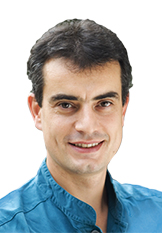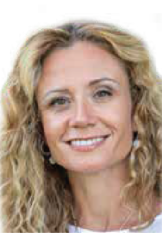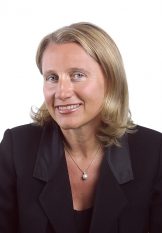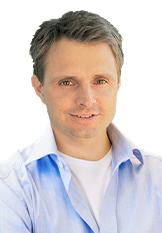PROF. BIRTE MELSEN | DR. CESARE LUZI | DR. SUSANNA BOTTICELLI | DR. MAJA OVSENIK | DR. MORTEN LAURSEN
Counting down:
Date:
13-14th May 2022
Price:
375 EUR
City:
Bled
COURSE TOPICS
13th May 2022
THE ROLE OF ORTHODONTICS IN THE REGENERATION OF THE DEGENERATED DENTITION.
Lecturer: Prof. Birte Melsen
Degeneration of the dentition occurs as a result of loss of teeth and reduction of the periodotium. Both factors lead to spontaneous migration of teeth resulting in aggravation of existing and development of new malocclusions. The role played by the orthodontists in regeneration of a maintainable reconstruction has been reinforced by recent developments in appliances and diagnostic tools and even more by an improved understanding of the tissue reaction to orthodontic and periodontal treatment. Orthodontic treatment can benefit patients with a degenerated dentition in several ways: By distributing the available teeth in an optimal position for final reconstruction; by regeneration of an alveolar process in an edentulous area making it suitable for an implant, and by improvement of the periodontal status, quantitatively as well as qualitatively; quantitatively by intrusion mechanics and qualitatively by generating an occlusion which is compatible with normal function. Mini-implants can be used when conventional anchorage is impossible, but can also serve a bone maintainers, as parts of temporary replacements and as handles when bone segments have to be displaced. The biomechanics necessary for the optimal usage of the TADs will be discussed.The presentation will present examples of the above-mentioned principles with a focus on Bio-mechanics.
13th May 2022
CLASS II TREATMENT WITH NO-COMPLIANCE STRATEGIES AND SKELETAL ANCHORAGE
Lecturer: Dr. Cesare Luzi
For decades the use of extra-oral tractions and functional appliances has represented the most common solution for treatment of class II malocclusions. At present, the advent of straight-wire mechanics and no-compliance devices had completely changed our approach to the problem. The possibility of eliminating the variable of patient compliance, both for maxillary molar distalization and for mandibular advancement, has given the opportunity of generating more predictable and reliable results reducing treatment duration. The recent introduction on the market of TADs has furthermore improved treatment protocols allowing absolute anchorage control, and their association to no-compliance for class II correction opened a new frontier in treatment strategies increasing treatment success rates. The aim of the presentation is to focus on diagnosis and treatment timing of class II malocclusion, in order to understand no-compliance protocols and related anchorage control. Several treatment strategies will be described through case reports highlighting the use of different appliances (Pendulum, Distal-Jet, Powerscope, Herbst, etc.) and their possible association to orthodontic miniscrews to optimize treatment results. Asymmetric cases with their individual treatment plan will be described in detail.
14th May 2022
ORTHODONTIC TREATMENT PROTOCOLS FOR PATIENTS BORN WITH A CLEFT CONDITION.
Lecturer: Dr. Susanna Botticelli
Patients born with a cleft lip and/or palate present with a high orthodontic treatment need, often associated with significant burden of care. Comprehensive cleft treatment is extensive and treatment results have to be considered in the long term. The orthodontist has to plan and manage interventions in collaboration with the other members of the cleft team, in order to coordinate treatment of the malocclusion with other procedures necessary to improve speech and naso-labial appearance. The lecture will introduce protocols of treatment in Denmark and the three phases of orthodontic care will be illustrated through the presentation of clinical examples.Furthermore, attention will be drawn to functional adaptation, issues with post-treatment stability and need for life-long retention.
14th May 2022
FACIAL ASYMMETRY
Lecturer: Prof. Maja Ovsenik
Preventive and early treatment in orthodontics is still the subject of debate and controversy regarding cost-effectiveness in the analysis of functional and psychosocial benefits. It is considered that the ideal time for treatment is in the late mixed dentition period, while others concluded that early orthodontic treatment would be beneficial and desirable, especially to enhance skeletal and dental development and to correct habits, function, and malocclusion in their early stages, especially transverse discrepancies which may lead to temporomandibular joint problems or facial asymmetry. Diagnosis of facial asymmetry is routinely based on the analysis of patient’ s facial photography by determining a symmetry plane and measuring linear and planar differences between the two hemifaces. As it is very difficult to evaluate facial asymmetry in small growing children from facial photography, constructing two mirror facial halves is one possibility of the assessment. However, the main drawback of this method is that facial photographs show a 3D structure in two dimensional perspective, the landmarks used to define the facial midline and to construct the symmetry plane can not be exatly defined, and thus, the precision of the method is highly questionable. PA involves iradiation risk and is therefore not appropriate to be used in small growing children. The use of three-dimensional method will be described to evaluate facial asymmetry in growing children.
14th May 2022
EXTRACTION IN CL II TREATMENT
Lecturer: Dr. Morten Laursen
Extractions in CL II malocclusions are often debated and questions are; why do we extract and when are extractions needed? The indications can be biologic and aesthetic aiming for good occlusion with harmonious position of the incisors in the face and in the bone. The mandibular gingival biotype and the alveolar envelope are determinant factors in the decision to extract. Space closure can be performed on continuous wires or with sectional and segmented technique. The choice of approach depends on the initial malocclusion and aims to prevent side effects from the appliance. Furthermore, anchorage control is required from the beginning of treatment and temporary anchorage devices (TADs) are helpful, when conventional dental anchorage will lead to unwanted anterior movement of the lower incisors, compromising the periodontium.
The lecture will focus on:
When to extract? Biologic and aesthetic considerations for extraction in class II treatment.
Space closure techniques. Predictability in space closure.
Anchorage control with dental anchorage and TADs.
AGENDA
Soon
LECTURER

PROF. BIRTE MELSEN
From 1975-2012 she held the title of Professor and Chairman of the Department of Orthodontics at The School of Dentistry, Aarhus University, Denmark. She retired from her Professorship and her position as Head of Department 1 September 2012 and she is now affiliated with NYU New York,US., Perth, West Australia, and Hannover, Germany. Since 1986, she has been working part-time in a private practice in Lübeck, Germany (limited to adult orthodontics).
Professor Melsen has authored more than 400 publications in the fields of growth and development based on research of human autopsy material, bone biology and clinical implant studies. In recent years her professional interests have focused primarily on the fields of Skeletal Anchorage, Virtual Imaging and Adult Orthodontic Treatment.
In 2000 she received the Knighthood of Dannebrog 1st degree.

DR. CESARE LUZI
Dental degree at the University of Rome “La Sapienza”. Postgraduate education and Master of Science in Orthodontics at the University of Aarhus, Denmark. Founder and first President of the European Postgraduate Students Orthodontic Society (EPSOS). Past President of the Italian Society of Biomechanics (SIBOS). Past-President of the Italian Association of Specialists in Orthodontics (ASIO) 2018-19. Active member of SIDO (Italian Society of Orthodontics) and AIdOr (Italian Academy of Orthodontics). Member of the EOS (European Orthodontic Society) and WFO (World Federation of Orthodontists). Winner of the Houston Research Award of the EOS (2006) and of the First Prize Award for Clinical Research of SIDO (2006). Winner of the Beni Solow Award of the EOS 2010. Diplomate of the Italian Board of Orthodontics and the European Board of Orthodontics. Visiting Professor University of Ferrara and University of Rome Cattolica (Italy). Private practice in Rome, limited to orthodontics.

DR. SUSANNA BOTTICELLI
Susanna Botticelli is consultant orthodontist at the Aarhus Cleft Lip and Palate Department, Postdoc at Aarhus University and in private practice in Aarhus. She graduated as a dentist from University of Bologna in 2001 and completed her orthodontic training in 2007 and her Ph.D studies in 2019 at Aarhus University. Her research focuses on assessment of cleft size, palatal volume and pre- and post-surgical evaluation of bone grafting procedures. Furthermore, she has an interest in impacted teeth and interdisciplinary collaboration. She is co-director of the International Short-Term Course in Orthodontics at Aarhus University. She was awarded the First Prize for the best oral presentation at the Nordic PhD Summit (NorDoc) in Helsinki in 2018.

DR. MAJA OVSENIK
Dr. Maja Ovsenik received her dental and orthodontic education at the Medical Faculty/Division for Stomatology, University of Ljubljana. After graduation in 1986 she was awarded a Medical research fellowship from the Ministry of Research and Technology for research work on the epidemiology of malocclusion and received her MSc in 1993. She completed her postgraduate studies in orthodontics in 1998 and recieved ther Phd in 2003. She is a member of the Slovenian Orthodontic Society, the European Orthodontic Society (was the President of the European Orthodontic Society in the zear 2010), the American Association of Orthodontics, the World Federation of Orthodontics and the Angle Society of Europe . She holds the Chair of the Department of Orthodontics and Dentofacial Orthopedics at the Medical Faculty/University of Ljubljana.

DR. MORTEN LAURSEN
Morten Godtfredsen Laursen received his DDS from Aarhus University, Denmark in 2001. He qualified as a specialist in orthodontics in 2007 after attending the International Postgraduate Programme in Orthodontics at Aarhus University. Since 2007, Dr. Laursen is employed part time at the Section of Orthodontics, Aarhus University, where he is currently involved in teaching of pre- and post-graduate students and organization of the International Short-Term Course in Orthodontics. He has a private office limited to orthodontics in Aarhus, Denmark and he is provisional member of the Angle Society of Europe. His research is focused on the dento-alveolar-bone-complex and tooth movement. He is past-president of the European Postgraduate Student Orthodontic Society (EPSOS).
